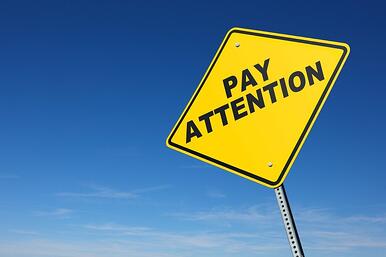
I speak to engineers a lot, and they can tell you, even the strongest materials pull apart, subjected to the right amount of force and load. The same thing can happen to any organization when people and teams get overextended, easy to do in an unbounded world of 24/7 technology.
When we do more than we can do well, it’s a lose-lose for company and individual. The blowback comes in the form of costly dysfunctions—plummeting performance, turnover, absenteeism and presenteeism (there in body, but not in mind), and burnout, which creates the opposite physical and mental states needed for employee engagement.
UNDER THE SURFACE
As burnout scholar Christina Maslach reported in her research, the main dimensions of burnout—exhaustion and cynicism—are the antithesis of engagement’s main characteristics: energy and dedication. For someone in a state of chronic fatigue or overwhelm, there is no capacity or intention to go the extra mile and voluntarily put forth the discretionary effort that defines engagement, which make people 28% more productive (Corporate Executive Board).
The toll on individuals is harder to see, but it’s there—poor morale, guilt, overwhelm, and frustration that they can’t take care of their responsibilities at work or at home. Feeling effective, or competent, is a core psychological need, and if we chronically feel ineffective, that undercuts motivation and drives a belief that things are out of control, which in turn fuels overwhelm and discontent.
No one wants to admit it when demands go beyond coping ability, so the problems stay under cover. They usually only surface in anonymous employee surveys, on questions asking employees about their work-life balance. My clients often come to me for work-life balance training after discovering on an internal survey that it’s a glaring issue.
CANARY IN THE COAL MINE
Less-than-stellar work-life balance scores are the canary in the coal mine, the signal that something harmful is in the air. If it’s not taken care of, it has the potential to turn the enthused and dedicated into the frustrated and disengaged. That can lead to lost productivity, resentment, cynicism, increased medical costs, and even the loss of top talent.
Giving employees a comprehensive work-life balance survey can surface issues that are critical to employee performance, satisfaction, and retention. People who feel they have good work-life balance are 21% more productive, studies show (Corporate Executive Board).
A work-life balance survey should be done anonymously to insure candid responses. I have my client's employees take the survey before we do our work-life balance training program, and then I follow-up with another survey after the program to measure progress.
To help you get started, I have provided a list of 20 survey questions that you can use to take the work-life temperature of your team or organization. The first three items are listed here.
WORK-LIFE BALANCE SURVEY
- I feel I have good work-life balance.
- I have more work than I can do well.
- I feel valued by the organization.
For the complete survey of 20 questions, click the button below for our 22-page "How to Do a Work-Life Balance Survey E-Book." The survey fleshes out, not just the state of work-life balance, but also its supporting issues, from poor time management, to information overload, to engagement and stress.
For each survey statement, respondees can answer: Not True at All, Rarely True, Somewhat True, Occasionally True, True, Often True, and Very True. Assign points for answers on a 7-point scale: 1 for Not True at All, 2 for Rarely True, 3 for Somewhat True, 4 for Occasionally True, 5 for True, 6 for Often True, 7 for Strongly True. Tally up average point totals per statement to find the hot-button issues.
A good work-life balance survey can open the door to conversation and solving bottlenecks that get in the way of performance and people’s lives. In my experience, the vast majority of employees want to work hard and go the extra mile—if they feel they have a chance to participate in the process and feel valued. When they are introduced to a battery of tools in my employee trainings to manage work and life better, there is real enthusiasm that can kick-start engagement.
At one of my clients, a work-life initiative at IBM energized one department so much that people from other departments wanted to know what they were doing so they could get in on the act.
THE ROAD TO PROCESS IMPROVEMENT
The survey, though, is just the initial step. It needs to be followed up by course of action, or skepticism sets in and credibility is lost. A work-life balance training or development program takes the initiative to the next step, providing a road map forward.
Our work-life balance programs give your team a chance to zero in on concrete process improvements through discussion, interactive exercises, and evidence-based tools that help people work more effectively and carve out a better work-life.
Work-life balance isn’t pie in the sky. It’s a practical system of adjustments to how we work—from time management, to interruption management, to prioritization, stress management, understanding the most potent motivation, enabling engagement, and refueling and recovery strategies— that create a more sustainable approach on the job, more peceived control over events, and a more gratified life outside work hours.
The work-life balance survey can get it all started, by demonstrating the unspoken needs necessary for employees to be able to navigate the work-life divide in the digital era.
If you have interest in a work-life balance training for your team, just click the button below. Let's start exploring a more productive road to success.










